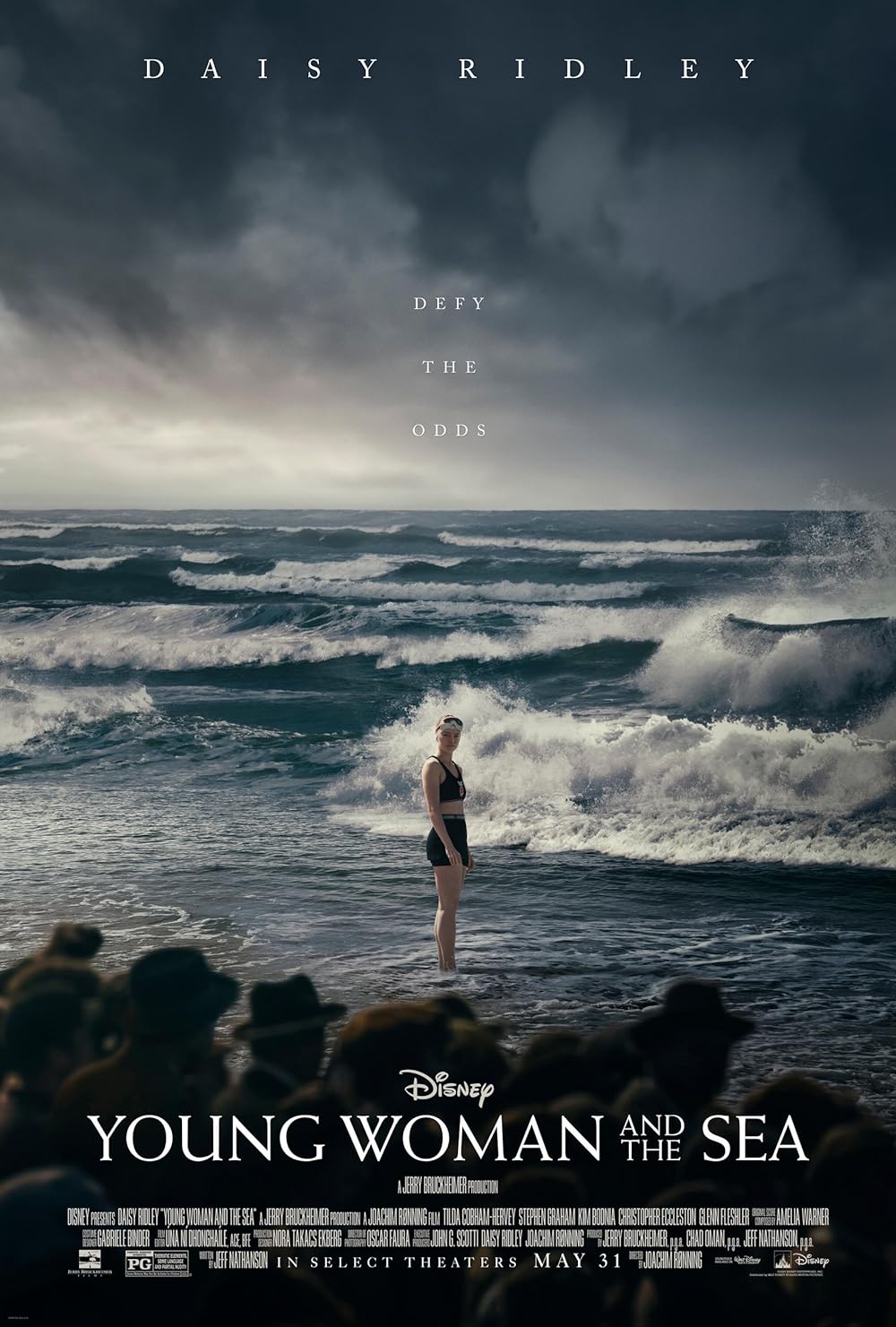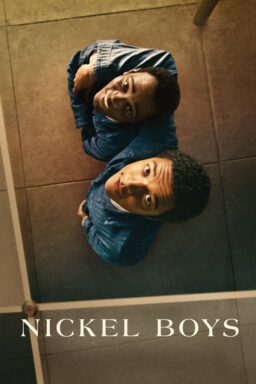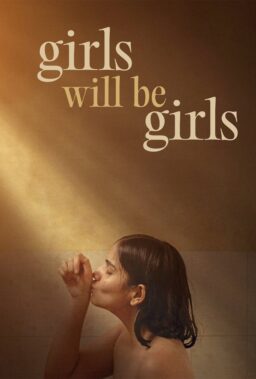Sarah Lasley's sneaky and unsettling "Welcome to the Enclave" starts out looking like an overly corporate and sterile intro video for a virtual suburban neighborhood one can visit online. The music sounds straight out of an iMovie effects library, and the graphics look like an outdated template for a 3-D Graphic Design For Beginners program or an ersatz, Minecraft-like world-building site that is still working out their glitches. You can almost hear the conversation between the two women (both played by Brenna Palughi) who put this neighborhood together and the IT person they hired to help them, who gave them a list of production options. and went for the second-to-cheapest one (the one with minor security blockage).
This presentation purposely settles the viewer in for what might be… something. Not sure what yet. A satire on privileged, suburban white women? Maybe. One of the women, Moni, is a brunette in a real estate broker's suit who hosts the intro with a southern drawl, promising a neighborhood "with a feminine touch." Her sister Blair lives across the street and hosts all the social gatherings of the Enclave, including yoga and "spiritual and educational" activities to come. At the moment, the Enclave has about three followers, and judging by the harmless content in their intro, it likely won't grow that much more unless they market and advertise it elsewhere.
And that's where things go wrong. Once the Enclave is linked on Reddit, inviting viewers to donate and leave their mark on the neighborhood (the more you pay, the more you can add to the design), the Enclave falls victim to the kind of audience they never intended to reach: pranksters, trolls, and people who know way more about this stuff than these two women do. It gets to be too much, and "Welcome To the Enclave" segues into one of the strangest and funniest closers to a short film I've seen in a long, long time.
Yet, the last few minutes of the film take the concept of the piece even further. Without giving anything away (you reallyneed to see it), the film perfectly conveys the online landscape anytime there's a viral phenomenon that lives in a moment. I know this is going back a ways, but one that comes to mind is "Snakes On A Plane." For months leading up to its release, people online contributed to making this film and got caught in the irony of it all. It became one of the most anticipated films of the summer of 2006. Or, so it seemed. It finally came out; everyone went to the Thursday midnight show and then stopped talking about it (it opened at #8 on the box office top 10). You'd go to the most active message boards after its release, and they became ghost towns. Everyone moved on.
Some complained to Lasley that the final shot runs too long. I suppose if the film ended right at the peak of the sequence that precedes it (not giving it away), I probably still would've enjoyed it, but leaving in the uncomfortable and unnerving tracking shot gives "Welcome To the Enclave" a new voice that raises the film a few notches above just an exercise in irony and satire. It's a beautiful mess, an apocalyptic dream, a journey through one's abandoned idea hijacked by cruelty, leaving nothing behind but glitches, mistakes, and disturbing imagery. We go from laughing at the antics of the women and the dark web pranksters to being the main character in "I Am Legend," wandering the wilderness looking for signs of life. It's a brave choice to leave it all in, especially when watching it with a crowd who aren't quite sure what to make of it.
In the best possible way, Lasley's film reminded me of a "Kids In the Hall" sketch. I could easily see these two women being played in drag by anyone in the Canadian quintet with the same result. Palughi inhabits both roles with the same enthusiasm and level of commitment and knows exactly where the joke is in this whole endeavor.
When I programmed this film for the Chicago Critics Film Festival (where it won the Audience Award), I knew it had to close the block. Every film had to, in some way, lead up to this one. It's the kind of short film you watch and think, "Huh… I don't know if I know what I just watched, but I want to see it again right now."

Where does something like this come from?
Well, the project evolved over many years. At the time, I was thinking about how white women map their spiritual journeys onto landscapes that don't belong to them—white spiritualism as a kind of colonization. I was working on a project about a woman who "finds herself" by swimming across the Rio Grande at Big Bend National Park, with no awareness of the violent history and current border crisis of that "magical" location. When COVID-19 hit, I had to cancel my location-based shoots and started learning 3D modeling (we were all picking up unrealistic hobbies at this time).
I began building an idealized gated community in the game engine Unity and slowly realized I could tell the same story with the Internet as the landscape—a place where earnest, naive middle-aged white women are the most vulnerable prey. I started modeling the neighborhood and daydreaming about what might happen inside it. It took about two years before I had a working script, and that's when I brought in Brenna Palughi, my collaborator and the actor for the two characters. I first made a 36-minute version of the film, with more scenes from the women and a longer finale, and then cut it down to 12 minutes for the final version.

How did you land on the Carly Simon song?
It was actually Brenna's idea! I insisted we choose a deep cut from one of the holy trinity of white boomer mom favorites—Carole King, Barbara Streisand, or Carly Simon—and Brenna suggested "Coming Around Again." The message of the song is perfect for the film's climax. I see it as a song about staying in a situation that's breaking your heart and keeping up appearances despite the pain. That's what Moni is doing in that final scene when she dances to it. Plus, the lines about burning the soufflé and kissing the dinner party host goodbye suggest a certain status quo that Moni wants to uphold with The Enclave.
After I got a quote for using the track in the film, I realized I could save thousands by re-recording it myself. I'm an avid karaoke singer, and I thought a karaoke, low-fi version of the song would fit better within the world of the film. I like the "almost-ness" of the fantasy neighborhood. The 3D graphics for The Enclave are a bit second-rate, partially due to my own limitations. Still, I also purposefully built the neighborhood in Unity instead of Unreal, a more cinematic game engine, to give it a noticeably digital look. The 3D animation isn't quite good enough to fool you into thinking it's real, but if you, like the women in the film, wanted to believe badly enough, you could suspend disbelief and accept it as real enough. The karaoke track feels similar to me.
Is this your first deep dive into animation? Or a live action animation hybrid? (if yes, was that a challenge?)
This is definitely my first deep dive, but my background in visual effects means I've dabbled in more subtle forms of animation and compositing. I was a motion graphics artist for Martha Stewart for a handful of years and have worked on some indie films doing small animation projects. However, this project was a big step into the unknown because 3D is a whole other monster. That being said, it proved fruitful not to know what I was doing. In the end, my own failures in using the software became content for the film. The entire ending with the ruined landscape started as an accident. Initially, I wanted the mountains to close in slowly and subtly, but my code was wonky, and they started taking over the whole neighborhood. It was a real "aha" moment and became the poetic finale where the mountains dissolve as we move inside them, revealing the clunky artifice behind the beautiful exterior.
I like to aim too high, be too ambitious, and land in the murky A-/B+ range. There are technologies available for syncing live-action camera movement to digital camera movement, but I decided to do the syncing by hand. As a result, the confluence of the characters and their world is a bit slippery. I enjoy the aesthetics of "not-quite"; they're flawed in the way humans are. We are aware that something feels a bit off but can't quite identify what it is. It's uncomfortable. I wanted the animation in the film to feel like it's holding on by a thread, just like the women are by the end.

How do you know Brenna Palughi?
Brenna and I met in 2007 when I was in art school at Yale, and she was in the drama school. Someone recommended her to choreograph the dance sequence for my thesis film, and we had an instant connection. In the almost two decades since, we've worked on each other's projects across film, music video, installation, and theater. For "Welcome to the Enclave," we shot the green screen footage over three years in various locations, from her living room in Brooklyn to my kitchen in Texas. Our director/actor relationship is almost non-verbal at this point because Brenna understands my work and vision so deeply. She's a brilliant writer, director, and choreographer and also has a strong background in improv comedy, which you see in scenes like Blair's glitter mug scene and Moni's final dance.
Were these gifs and images you found on Reddit and other sites like that?
It's a mixed bag. The penis and fart drawings inside Moni's house I did myself (putting that art degree to good use); my little brother, who's very tapped into internet culture and the dark web, sent me some of the more recognizable gifs, and my dear friend and the brilliant artist Porous Walker contributed some his work as well. The sexed-up, cartoon-style drawings that are mapped onto Moni's house (such as the penis-spewing pizzas) are from Porous Walker. I wanted a nice mix of sources, so it felt like this was an army of folks trolling the women and not just one person.
What's next for you?
I'm in post-production for my new project, "Climate Control." It's another hybrid 3D/live-action short film that centers on a climate activist trying to make a documentary about the perils of the fossil fuel industry which is constantly subverted by an AI bot who wants to tell a generic love story. It's like 50% climate justice and 50% AI-generated Hallmark film, with some murky in-between moments.
The film looks at how we process our eco-anxieties with cheap distractions. True to my distrust of techno-utopianism, it's also a critique of the evolving role of AI in art. I made the film entirely with my Gen Z students, who traveled to Lutzerath, Germany, with me last summer to shoot the documentary portion. I'm hoping to release it in early 2025.












